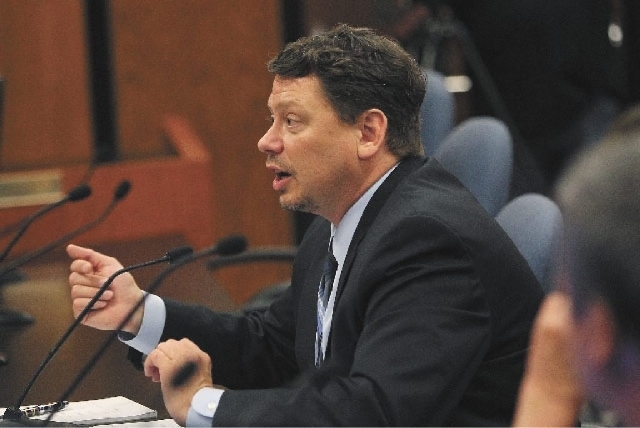New star rating system rises over Nevada’s struggling schools

Less than 19 percent of Clark County high school students passed the Algebra I spring semester exam in 2012.
Not even half of eighth-graders passed the pre-algebra exam.
About one of two students in elementary and middle school earned the minimum score for grade-level proficiency on the state’s reading, writing and science tests.
Despite these low pass rates — with a 61 percent graduation rate — the vast majority of Clark County School District campuses are being handed passing grades for 2011-12. More than
80 percent of Clark County’s 317 schools will be receiving at least a C grade, or three out of five stars, when the new, federally recognized accountability system — the Nevada School Performance Framework — is rolled out Friday, district officials said.
New Superintendent Pat Skorkowsky presented the basic overview to School Board members on Wednesday but said individual school scores won’t be released until the Nevada Department of Education announces them at the end of the week.
“We cannot release any more information before Friday,” he said.
With individual school results not yet available, it’s unknown which schools earned passing grades.
One thing is for sure. Not since President George W. Bush’s administration implemented the No Child Left Behind Act in 2002 have so many Clark County schools been given a thumbs up. Year after year, more Clark County schools have failed to meet the requirements of No Child Left Behind, with less than a third of district schools deemed “adequate” or better by the 2011-12 academic year.
But local and national education officials have criticized No Child Left Behind for being too focused on test results and unreachable standards, with requirements ratcheted up every year. The goal was to have 100 percent of students at grade level by 2014.
It’s no surprise then that the sudden and remarkable rise of Clark County school pass rates comes at the time of No Child Left Behind’s demise. But the pendulum could be swinging from one extreme to another as states’ self-created standards replace strict federal guidelines, according to an analysis by the Center on Education Policy.
Over the past two years, the federal government has granted No Child Left Behind waivers to 37 states, including Nevada, so they can create their own systems for grading schools to replace the act’s requirements.
States’ policies “tend to be more complex and multifaceted, less transparent, and less uniform … than the policies they are replacing,” the center wrote.
While No Child Left Behind was often criticized for setting unreasonable expectations, the latest wave of self-created school evaluation systems are already coming under fire for passing too many schools.
“Do the math, and it doesn’t add up,” said Phillip Lovell, a vice president at the Washington, D.C.-based Alliance for Excellent Education.
Lovell was speaking about the Clark County School District’s now-defunct star-rating system — created between No Child Left Behind’s abandonment and Friday’s rollout of the state’s own star-rating system — that gave passing grades to three-fourths of district schools.
The district dropped its fledgling star-rating system just before former Superintendent Dwight Jones abruptly resigned in March.
The decision to drop the rating system was made because the state’s rating system will drive all funding decisions. But the state system, although different, will be passing even more Clark County schools with three to five stars.
The district’s system bolstered scores by awarding the maximum points possible under categories such as a school’s graduation rate for just improving, although the graduation rate might only be 55 percent. It placed more weight on improvement than grade-level proficiency.
“Parents think their school is doing well when it’s not,” said Jessica Cardichon, director of federal advocacy for the Excellent Education alliance.
This A-for-effort allowance ran throughout the district’s now defunct scoring system, from the points earned for having credit-sufficient students to the pass rate on the state exam required to graduate. It’s why Western High School in central Las Vegas earned four out of five stars despite posting a 55 percent graduation rate and a 5 percent pass rate on the Algebra I final exam. Less than a third of Western sophomores passed the state reading test. The state’s assessment of Western will be released Friday.
While the state system also takes improvement into account, that’s not the be-all and end-all, Interim Nevada Superintendent of Schools Rorie Fitzpatrick said.
“We must at some point value the bar, and not just growth towards the bar,” she said.
The question to be answered Friday is, under the new bar, how did more than
80 percent of Clark County schools — which educate the majority of the state’s students — earn three stars or better in 2011-12.
That school year, Nevada ranked dead last in the nation for student performance, according to the 23rd annual Kids Count report published by the Annie E. Casey Foundation.
Contact reporter Trevon Milliard at tmilliard@reviewjournal.com or 702-383-0279.